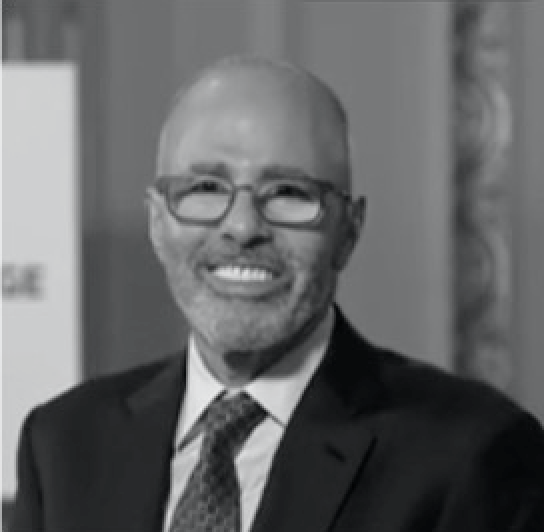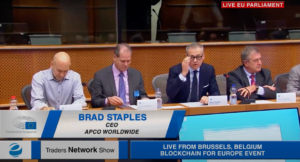Telehealth Leaders Discuss Virtual Medicine in the Future of Healthcare – Converge2Xcelerate
Contributed by: Show Editorial Team
Dr. John Halamka, Mike Baird, Dr. Lyle Berkowitz, Dr John Korangy, and Roy Schoenberg discuss the future of telehealth and medicine on the Telehealth Titans panel at Converge2Xcelerate Conference (Boston, MA)
Hospitals could learn a lot from Blockbuster. The movie rental chain thought customers would continue to flock to their stores for the in-person browsing experience, even when technology provided a more convenient option.
Blockbuster learned its lesson the hard way—only a single store (in Bend, OR,) remains, while streaming services like Netflix have changed the game of in-home entertainment. A similar story might be told about healthcare, with telehealth revolutionizing the way care is delivered. That was a key takeaway from the Telehealth Titans panel discussion held at the 2019 Converge2Xcelerate Conference. The event, held in Boston, was filmed live by the Traders Network Show, hosted by Matt Bird.
The panel, moderated by Dr. John Halamka, now the president of Mayo Clinic Platform, featured Mike Baird, president of American Well; Dr. Lyle Berkowitz, Chief Medical Officer of MDLive; Dr. John Korangy, founder and CEO of Careclix; and Roy Schoenberg, CEO of American Well.
The panel discussed how telehealth can improve care-delivery models—and this was before the Covid-19 pandemic further normalized virtual medicine.
The panel began by defining telehealth. While most people are likely to picture telehealth as a typical office visit conducted over a video call, the reality is that telehealth is much more varied. Telehealth could be as simple as a poisonous mushroom expert looking at a photo on his phone to determine whether the fungus in question is dangerous, Halamka noted.
“To me, it’s the delivery of care through technology,” Schoenberg said.
If that sounds broad, how about this: “It’s just healthcare,” Korangy said. “I think the term will disappear as time goes on as people become more comfortable.”
Consider this: when you shop online, you don’t think about the fact that you’re engaging in ecommerce—you just call it shopping. The same is likely to occur with telehealth as it is further integrated into our existing medical system, Halamka said.
What, then, are the ramifications? The panel suggested telehealth can improve outcomes, because it leads to more transparent data, allows patients to connect with experts and creates more efficiencies in the system.
Regarding transparent data, the panel discussed the fact that patients are more likely to give honest answers when they aren’t being asked directly by a person, who could be thought to be rendering judgment. For instance, Halamka pointed to a study that showed people report consuming twice as many weekly drinks when providing that data to a computer instead of a person.
In terms of creating a more efficient system, the panel agreed that this outcome won’t arise simply by trying to repackage physical care in a digital form. Instead, the healthcare industry needs to be intentional about how telehealth gets added to the healthcare toolkit.
Berkowitz predicted that telehealth will enable a model of “virtualists” and “complexologists,” by which virtualists handle the simpler cases—like flu and sinus infections, and complexologists focus on more specialized needs.
“I’d suggest that we are going see the rise of the virtualist being the type of doctor who takes care of the easy stuff,” he said. “It’s a very scalable care using telehealth.” Essentially, that would mean instead of going to your primary care doctor when you have a bad case of the sniffles, you’d describe your symptoms over video chat to a doctor in your virtual primary care group. As technology gets better and better—smartwatches and fitness apps can already provide a great deal of information about your vital signs—doctors will have more than sufficient information to make a reasonable diagnosis and corresponding treatment plan, the panel suggested.
If your case was more involved, you could be a connected to a specialist—and that specialist could theoretically be located anywhere in the country. For some patients, it might be a mental hurdle to get over not being treated by a doctor in person, but if the choice is between connecting with a faraway doctor who is an expert in your particular type of cancer, and a nearby doctor who only has a general familiarity with that cancer, it makes sense to connect with the expert, the panel suggested. Plus, a patient in need of a specialist could still travel to see that doctor and then conduct followup virtually.
Meanwhile, the sickest of the sick patients will still be treated in hospitals, Berkowitz said.
“The hospitals of the future will remain doing what they are doing, taking care of the really sick people who come in, but they will be able to increase their panel size by using technology to load balance,” Berkowitz said.
Halamka suggested hospitals, which currently rely on getting heads in beds to turn a profit, could be repurposed as virtualist centers, while Schoenberg suggested hospitals could transform into centers of excellence, specializing in particular types of care.
Either way, it all points to a future that depends on telehealth to reduce inefficiencies in the current health care model. In many ways, that future is already here. After all, as Halamka pointed out, if you were to ask for the address of the Mayo Clinic, you’re likely to be asking about a web address and not a physical location.
(Written by Andrew Waite; Editing and revisions by Nicole Liddy)
PR and Media By: CommPro Worldwide
Link to original article: here
All rights reserved to the Traders Network Show. No part of this publication may be reproduced, distributed, or transmitted in any form or by any mean including; photocopying, recording, or other electronic or mechanical methods, without prior written permission of the publisher, except in the case of brief quotations embodied in critical reviews and certain other noncommercial uses permitted by copyright law. For permission requests, write to the publisher addressed “Attention: Permissions Coordinator”








